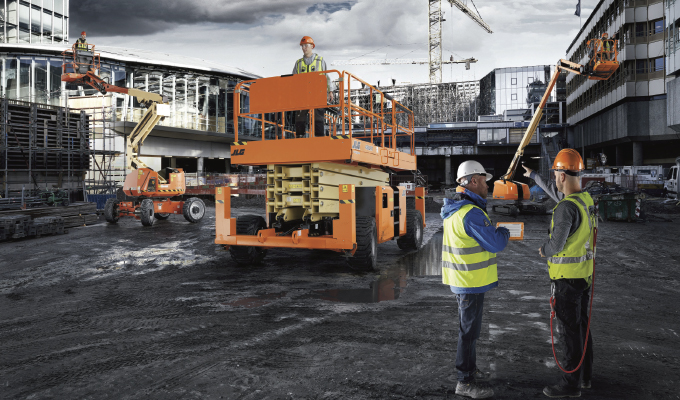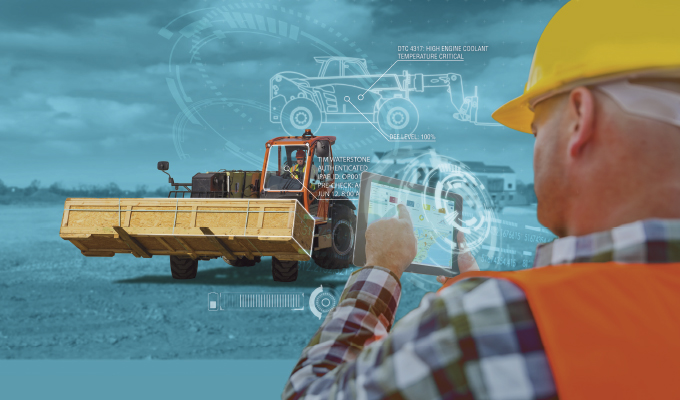Over the past few years, the global construction industry has navigated unprecedented times with high highs and low lows brought on by the unanticipated pandemic. As a result, the dynamic on today’s job site has changed, new megatrends have surfaced and businesses have had to reinvent themselves to be prepared for the future.
When we look at what was impacting our industry pre-pandemic (2015-2020), we identified 5 key drivers: Global Marketplace, Productivity Imperative, Sharing Economy, Digital Future, and Urban World.
Baked within these top 5 trends was urbanization, the phenomenon of more and more population moving to urban centers, which was driving demand for product electrification.
When we think about the megatrends for the 5 years following the pandemic (2021-2025), we see new key influences emerging: Shifts in Growth and Trade, Stronger Societal Deal, Accelerating Disruption, Digitally Powered Customer, and New Ways of Working. Let’s take a closer look at each of these.
1. GROWTH & TRADE SHIFTS
Over the last few years, the world has seen a tremendous shift in economic power. Before the pandemic, the construction industry had become largely dependent on suppliers from a few key countries, which ultimately exposed several long-term risks.
Post-pandemic, it has begun moving towards region-for-region supply chains to create a more diversified supply base, including suppliers from mature, developing and emerging countries, a step toward the industry’s long-term evolution.
“We’ve learned that we need to become more geographically adaptive and agile, and as such, are exploring nearshoring opportunities to regionalize our supply chains and push towards a sustained recovery,” says JLG’s President Frank Nerenhausen in a recent interview about the State of the Rental Industry. “Regionalization of our supply chain is a positive economic move, as its additive and will result in localized business and job growth.”
Throughout the changing climate of the construction industry, manufacturing leaders like JLG have looked to new technologies and emerging trends to remain competitive. Nerenhausen says, “Our ultimate goal is to stabilize our supply chain without a compromise to product quality.”
Though Nerenhausen specifically references the changing industry in 2022, the message remains the same for this year and beyond: Adaptability is key.
2. STRONGER SOCIETAL DEAL
Sustainability has been at the forefront of product development for quite some time, with the world moving toward electric vehicles, clean energy, and reducing gas and noise emissions. While being more environmentally friendly could be considered the focal point of the movement, other initiatives such as increasing efficiencies and improving productivity are equally as important.
“Connected and sustainable technologies are two of the trends we have really seen take off in the last couple of years,” says Nerenhausen in his 2022 State of the Rental Industry interview. “People are being asked to do more with less, in tighter spaces, under stringent time and budget demands in a manner that is minimally disruptive to the environment.”
To meet the demands of these geopolitical issues, the construction equipment industry has shifted its intentions and goals, focusing heavily on sustainability, with the aerial market expanding its own narrative.
“Looking at sustainability from an aerial industry perspective, improving air quality by reducing machines’ CO2 emissions will significantly contribute to protecting the environment,” says Barrie Lindsay, JLG’s director of engineering for the EMEAIR region in his “Operating Sustainably, Transforming Tomorrow” presentation to IPAF.
According to Lindsay, utilizing sustainable resources as much as possible in the design, manufacture, and marketing of eco-friendly products will help customers who need more “green” solutions to meet new legislation and regulations on emission reductions.
“How can we as a manufacturer respond to the growing pressure our customers are getting from local, regional, and country governments for more sustainable jobsites? By saying ‘yes’ to electrification,” he adds. But, the journey to a more sustainable, eco-friendly world (and jobsite) will require a long-term commitment from OEMs, end-users, and everyone in between.
3. ACCELERATING DISRUPTION
Technology acceleration, creation, and utilization have all been at the forefront of the digital boom. However, while both technology and digitalization advance at an astounding pace, the heavy equipment industry has continued to lag, adopting trends in some instances 10+ years after they have been adopted in other industries.
While the construction industry has been traditionally slower to adopt than adjacent industries, as we move into the post-pandemic era, companies and manufacturers are thinking about “what’s next” and have begun focusing more on automating processes and technologies.
One of the advancements changing construction today is augmented reality (AR), a technology that superimposes a computer-generated image on a user’s view of the real world, thus providing a composite view. While AR can be used with tablets, helmets or glasses, construction professionals can utilize this technology right from their phones.
The hunt for autonomous machines and technologies is not new. Over the years, agricultural equipment manufacturers have been proactive in developing autonomous solutions; however, users have been slow to adopt them, showing a preference for partial “moments of autonomy” instead.
In the construction industry, autonomy can aid in repetitive construction tasks that may result in an overuse injury. Now more than ever, manufacturers are searching for ways to boost safety and efficiency using automated solutions.
“There is substantial observation happening at the jobsite level to identify the ‘jobs-to-be-done’ that semi-autonomous and eventually fully autonomous equipment will be the solution for,” Rob Messina, JLG’s senior vice president of product development and product management, says. “There’s still a lot of work to be done in this area before we see mainstream use of fully autonomous solutions.”
Regardless, he finishes, advancements will continue to make their mark in the industry—one that is always looking for new ways to innovate and improve processes.

4. DIGITALLY POWERED CUSTOMER
It’s a common mission amongst construction fleet managers to find ways to make their business more productive. Whether that means getting work done faster, reducing equipment downtime, promoting jobsite safety, or eliminating tedious or repetitive tasks, the concerns of wasting time or money are real.
These days, everything is connected to the internet including equipment and other construction-related devices. Because of this, all the associated data is moving to the cloud, making real-time data and information accessible anytime and anywhere.
And technology isn’t stopping, these tools are only continuing to grow in popularity. In fact, many consider the jobsite of the future to be about two-way, interactive communication. Two-way communication links equipment to operators, remote third parties, and other machines on the construction site to automate certain functionalities, speed [up] documentation, deliver information for crews to make faster, more accurate decisions, and enable technicians to access information that increases machine uptime.
As the industry continues to take steps toward connected jobsites and data-driven businesses, new opportunities to interact and connect will offer exciting insights into the world of construction.
5. NEW WAYS OF WORKING
Consequences of the pandemic have forced dramatic changes throughout the construction industry, like new safety protocols, a workforce shortage, and demand outpacing supply.
As a result, businesses have had to reinvent themselves to be prepared for the future. That reinvention has led to a new influx of remote and hybrid work. In fact, with the ever-present labor shortage and skills gap affecting the industry, the rise in working remotely has caused an increase in the pool of qualified candidates, as well as shrunk it considerably as workers want more flexibility to look outside the industry.
This has inspired many businesses to invest in technologies that inspire close connection and virtual meetings, as collaboration has proved to be key in remote work. Employees, regardless of age, need digital capabilities to help them thrive—opening the door for innovative new tools and technologies.
“To stabilize the workforce and facilitate this type of work, look for an increase in autonomous and semi-autonomous robotic features that allow machines to be operated or monitored by a skilled tradesperson at a distance from the work area; perhaps even off-site,” adds Nerenhausen. “Remote project managers and service technicians may also become more commonplace as new digital technologies and applications facilitate the sharing of real-time jobsite data and machine diagnostics.”
CLOSING THOUGHT
As these new megatrends continue to pave the way for the jobsite of the future, OEMs like JLG will be at the forefront of this transformation, pushing the boundaries of possibility and redefining what’s possible.
About the Author:
Sara Vincent is the director of marketing for JLG Industries, Inc., an Oshkosh Corporation Company and a leading global manufacturer of mobile elevating work platforms (MEWPs) and telehandlers. For more, visit jlg.com.
Modern Contractor Solutions, January 2023
Did you enjoy this article?
Subscribe to the FREE Digital Edition of Modern Contractor Solutions magazine.



